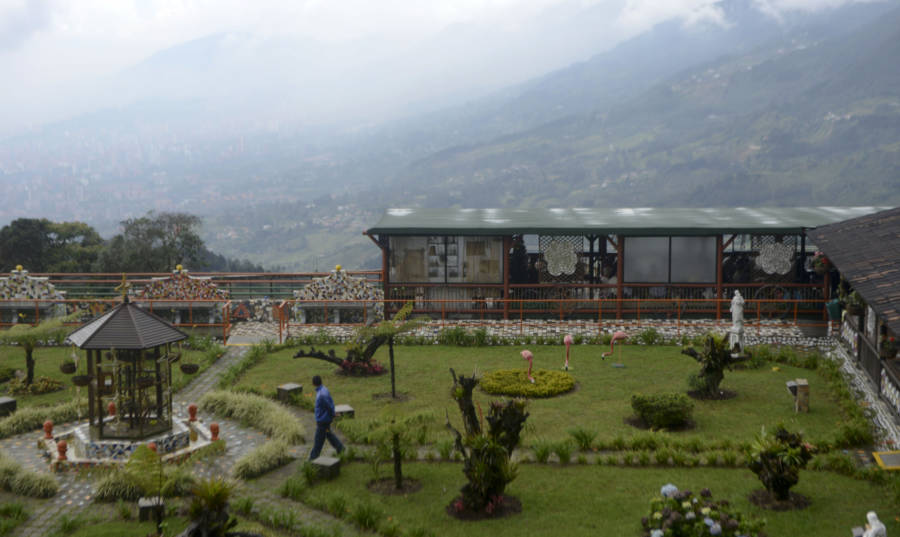When drug lord and “King of Coke” Pablo Escobar agreed to a prison sentence in Colombia, he did so on his own terms. He constructed a jail so lavish it was referred to as “Hotel Escobar” or “Club Medellin,” but the enduring name has been La Catedral, “The Cathedral,” and with good reason.
The Contentious Surrender Of Pablo Escobar
The Colombian government struggled to prosecute Escobar’s Medellin cartel because Pablo Escobar himself was so popular amongst certain segments of the public. Even today, Escobar’s memory is reviled by those who deplore the violence and devastation he wrought, while it is revered by others, who remember his acts of charity in his home city.
However, a small group of politicians and policemen devoted to imposing rule of law in Colombia refused to be intimidated by Escobar. Things eventually came to something of a deadlock with both sides refusing to give up any ground until a new policy was tentatively agreed upon: negotiated surrender.
The terms of surrender stipulated that Escobar and his cronies would cease their domestic terrorism and give themselves up to the authorities in exchange for the promise that they would not be extradited to the United States. Extradition meant being tried in a U.S. court which Escobar wanted to avoid.
During negotiations, Escobar also added in conditions that reduced his jail time to five years and that would ensure he served his sentence in a prison of his own construction, surrounded by hand-picked guards as well as protected from his enemies by Colombian soldiers.
Despite opposition from hard-liners claiming the negotiated surrender policy was nothing but a farce, the Colombian government added an amendment to the constitution which banned the extradition of citizens in June of 1991. Escobar kept up his end of the bargain and turned himself in a few days afterward with President Cesar Gaviria declaring that the narco’s “treatment will not be any different from what the law demands.”
La Catedral, The Prison That Held Pablo Escobar
Escobar would quickly give proof to the lie behind Gaviria’s declaration. On June 19, the drug lord was helicoptered to the mountaintop upon which he had chosen for strategic purposes to construct his prison. He bade his family farewell, strode past the armed guards through the 10-foot high barbed-wire fences, and went into the compound where he officially signed his surrender document.
To all outward appearances, it seemed like a fairly standard prisoner surrender. The facade of barbed wire and concrete, however, was a thin cover for a very different reality.
While most federal prisoners in the United States do have access to a gym, for example, they do not usually also have access to a sauna, jacuzzi, and pool with a waterfall. Nor do they have access to outdoor sports facilities grand enough to host national sports teams, as Escobar did when he invited the entire Colombian National Team to play on his personal soccer pitch.
La Catedral was so extravagant, in fact, that it also boasted an industrial kitchen, a billiards room, several bars with big-screen TVs, and a disco where the drug kingpin actually hosted wedding receptions during his imprisonment. He feasted on stuffed turkey, caviar, fresh salmon, and smoked trout while in the arms of beauty queens.
Escobar’s Escape From La Catedral And The Prison Today
As opponents to the policy of negotiated surrender had predicted, imprisonment did not prevent Escobar from running his drug empire.
During his time at “Hotel Escobar,” the kingpin received more than 300 unauthorized guests, including several wanted criminals. But it wasn’t until 1992 when Escobar ordered the murder of several cartel leaders along with their entourages and families from the security of his luxurious La Catedral that the Colombian government decided it was time to end the charade.
By the time army troops descended on “Club Medellin” though, Escobar was long gone after having just walked out the door unmolested. He had served just thirteen months of a five-year sentence.
Pablo Escobar was famously killed a year later in a shootout while still on the run. But as for La Catedral, Escobar’s luxury prison remained deserted for years until the government loaned the property to a group of Benedictine monks, some of whom claim that the ghost of the former owner still makes nighttime appearances.
